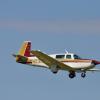Lower MP after intercooler installation
-
Members Online
- Old Chub
- Stubby
- Jason 1996 MSE
- ta2too
- acekng1
- caa0428
- GoDemonDeacons
- Parker_Woodruff
- Jake@BevanAviation
- 201Mooniac
- Mufflerbearing
- varlajo
- Peter T
- Fly Boomer
- Griswold
- affricate
- ElkoRandy20J
- thomas1142
- Montreal
- wburger1
- Geoff
- BillyT0020
- Bob E
- joepilotmooney
- Stew477
- N201MKTurbo
- Marc_B
- adventuresaviationllc
- John J
- Losbright1
- TCC
- Ragsf15e
- Flymu2
- 802flyer
- alexz


Recommended Posts
Join the conversation
You can post now and register later. If you have an account, sign in now to post with your account.